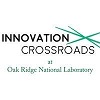
IC COHORT 4 SPOTLIGHT: PixelEXX Systems’ new approach will replace CMOS in cameras
 (EDITOR’S NOTE: This is the fourth article in a series spotlighting the five start-ups that comprise Cohort 4 of the “Innovation Crossroads” program operated by Oak Ridge National Laboratory with support from the Tennessee Valley Authority. Today’s focus is on PixelEXX Systems Inc.)
(EDITOR’S NOTE: This is the fourth article in a series spotlighting the five start-ups that comprise Cohort 4 of the “Innovation Crossroads” program operated by Oak Ridge National Laboratory with support from the Tennessee Valley Authority. Today’s focus is on PixelEXX Systems Inc.)
Techopedia defines a pixel as the smallest unit of a digital image or graphic that can be displayed and represented on a digital display device. For Renee Carder, there are big opportunities in that technology space for the start-up that she is leading through Cohort 4 of the “Innovation Crossroads” (IC) program operated by Oak Ridge National Laboratory (ORNL) with support from the Tennessee Valley Authority.
A neuroscientist by training, Carder spent 10 years on the faculty and staff at the University of Chicago, including six as an Assistant Vice President, plus another year as Chief of Staff at Argonne National Laboratory before helping launch PixelEXX Systems Inc.
“I’ve always been fascinated with big, complex problems,” she told us in a recent interview. That interest has continued over the last decade as the company has evolved from its initial research developing tools to study cell signal cascades.
While she and Co-Founder Ken Bradley produced results “as good as the best technologies out there at the time,” Carder says that they “Couldn’t extend those measurements to deliver major advances in that arena”
However, armed with a grant from the National Science Foundation to refocus their technology on cameras for endoscopes, the PixelEXX Systems team discovered new physics in their technology and, using those insights, developed ways to tune their semiconductor pixels and make them more sensitive, easier and cheaper to manufacture and to improve their optical performance – all of which have broad implications for next generation imaging and cameras.
“We now have a broad platform technology,” Carder says, adding, “We could move to all sorts of exotic materials to improve imaging of infra-red and ultra-violet light, but we’re staying visible and near-visible light imaging right now.”
So, how might the PixelEXX Systems technology impact you? You have no farther to look than your cellphone and its ubiquitous camera.
“Think about how imaging has evolved,” Carder said, noting film to digital to a camera in your phone. That was something that I understood, having been trained as a photographer more than 50 years ago in the U.S. Army. How many people own a separate camera? After all, the resolution in cellphone cameras is outstanding, but PixelEXX Systems believes it can bring a significant improvement to what is already available by delivering images with more colors, better contrast and much more detail.
Today, Carder says between 80 and 90 percent of the cameras on the market use what is called CMOS (Complementary Metal Oxide Semiconductor) technology. PixelEXX Systems’ new approach will replace CMOS in cameras.
“We offer very unique features in this very image-driven culture,” she says. The company’s technology and enhanced features can help in a variety of sectors, not just personal cellphones. Carder cites everything from inspection of equipment to examination of agricultural products.
How does it work?
“We can control the way light interacts with our pixels so much more light is measured using a tiny footprint and delivering enhanced resolution,” Carder explains. “This also vastly improves the signal-to-noise ratio, so we don’t have to overcome noise.” The result is greater clarity, something that pushes the proverbial envelope.
‘We are a bit of a different company,” she adds. “We are at something that is more than an incremental change in cameras.” During the two-year IC Fellowship, Carder will focus her additional research on areas like silicon photo multipliers and low light applications in nuclear energy and the life sciences.
She ends the interview with her own question: “How good can we get at detecting light in a meaningful way?”
ORNL recorded YouTube videos on each of the Crossroads team. Here’s a link to Carder describing PixelEXX Systems.
Like what you've read?
Forward to a friend!

